 I enjoyed Nicol Eltzroth Rosendorf's gnarled, doom-soaked debut Big Other (2020) quite a bit, but I enjoyed it in a casual way and failed to truly grasp the full extent of his singular and ambitious vision. While that situation has thankfully been remedied by this latest opus, the music of Internal Return is just one piece of a much larger and more complex ambition that incorporates Jewish tradition, artificial intelligence, video art, and a uniquely disturbing visual aesthetic that resembles a vivid sci-fi nightmare that blurs together several dystopian cinematic futures at once. Curiously, when taken by itself, the music of Internal Return is more elusive and ambiguous than its more crushing and epic predecessor. When combined with Rosendorf's AI-created videos, however, Internal Return transforms into a viscerally unsettling mindfuck that will probably haunt me for weeks. As Rosendorf himself puts it: "It is not a comfortable place to be in, at least not exactly; like being adrift in an imageless dream, it produces monsters of a kind that, once they are receding into memory, we get the sense they were not actually terrifying, just... strange." Hopefully, those monsters will recede into memory for me soon, as I am still very much lingering in the "terrified" stage for now.
I enjoyed Nicol Eltzroth Rosendorf's gnarled, doom-soaked debut Big Other (2020) quite a bit, but I enjoyed it in a casual way and failed to truly grasp the full extent of his singular and ambitious vision. While that situation has thankfully been remedied by this latest opus, the music of Internal Return is just one piece of a much larger and more complex ambition that incorporates Jewish tradition, artificial intelligence, video art, and a uniquely disturbing visual aesthetic that resembles a vivid sci-fi nightmare that blurs together several dystopian cinematic futures at once. Curiously, when taken by itself, the music of Internal Return is more elusive and ambiguous than its more crushing and epic predecessor. When combined with Rosendorf's AI-created videos, however, Internal Return transforms into a viscerally unsettling mindfuck that will probably haunt me for weeks. As Rosendorf himself puts it: "It is not a comfortable place to be in, at least not exactly; like being adrift in an imageless dream, it produces monsters of a kind that, once they are receding into memory, we get the sense they were not actually terrifying, just... strange." Hopefully, those monsters will recede into memory for me soon, as I am still very much lingering in the "terrified" stage for now.
As was the case with Big Other, Rosendorf enlisted an eclectic array of talented guests to help him realize his vision and Tzadik/Davka alum Daniel Hoffman kicks off the album with a fiery klezmer-informed violin solo over a roiling bed of doom-inspired drones. As Rosendorf sees it, Hoffman's violin acts as "a furious, yet frail guiding voice in a void" while "the music treads a path that you cannot follow, one that arbitrarily narrows down, twists and turns whenever you're certain you have it right." He also compares the underlying music to a series of depth charges and "an apocalypse in miniature," which sounds about right to me. Without the accompanying videos, Internal Return feels like being trapped in a crumbling and haunted fun house: it approximates a labyrinth of darkly surreal scenes that feel more like fleeting, enigmatic impressions than compositions with a deliberate dynamic arc or cathartic payoff. There is one exception, however, as the album's smoldering final drone epic ("Immer Besser") tags in Liturgy drummer Greg Fox for a ferociously volcanic crescendo of sludgy doom metal chords and machine-like blast beats. That piece is the closest thing that Internal Return has to a single, as the remaining pieces are too deconstructed to make a deep impact outside their intended context (musically, at least).


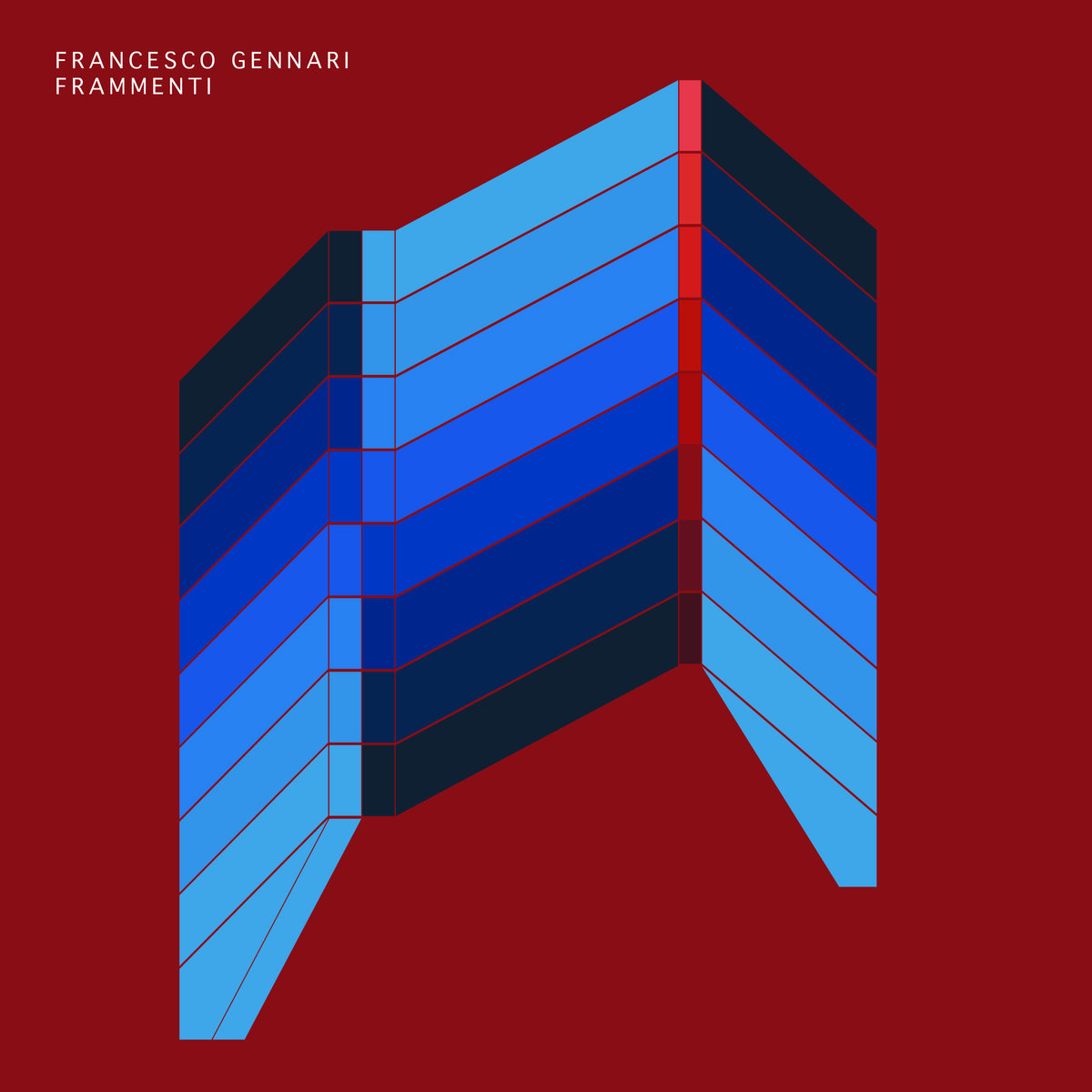 It is immediately clear from the opening piece "Preludio" that this is music composed with an unusually clear sense of structure and direction. As a classically trained pianist, Francesco Gennari has a solid grounding in music theory and he applies this knowledge to modular synths, with an authentic desire for experimentation and some serious chops; he can play. What elevates this debut recording even further is his ability to develop complex pieces from simple themes, while injecting energy and a sense of aggression and dynamics into his music.
It is immediately clear from the opening piece "Preludio" that this is music composed with an unusually clear sense of structure and direction. As a classically trained pianist, Francesco Gennari has a solid grounding in music theory and he applies this knowledge to modular synths, with an authentic desire for experimentation and some serious chops; he can play. What elevates this debut recording even further is his ability to develop complex pieces from simple themes, while injecting energy and a sense of aggression and dynamics into his music. These two singular artists have been fitfully playing together for roughly a decade now and they have released a number of albums documenting their incredible duo performances. Notably, their most recent union was for 2021's absolutely killer Made Out of Sound album, but that one was a bit of an aberration for the duo, as it was a studio creation crafted remotely. Happily, Play at Duke captures the pair back together on stage where they belong. The stage in question was unsurprisingly at Duke University, but the album's prosaic title omits a rather significant detail: the performance in question closed out Three Lobed Recording's 21st anniversary festival in appropriately riveting fashion. While both artists rank among my favorite musicians and have truly incredible chemistry as an improv unit, some performances are undeniably better than others and Play at Duke feels like an especially inspired night to me. Moreover, Orcutt and Corsano make a virtue of brevity as well, as there is not a single wasted note or even a hint of a lull in this 25-minute tour de force.
These two singular artists have been fitfully playing together for roughly a decade now and they have released a number of albums documenting their incredible duo performances. Notably, their most recent union was for 2021's absolutely killer Made Out of Sound album, but that one was a bit of an aberration for the duo, as it was a studio creation crafted remotely. Happily, Play at Duke captures the pair back together on stage where they belong. The stage in question was unsurprisingly at Duke University, but the album's prosaic title omits a rather significant detail: the performance in question closed out Three Lobed Recording's 21st anniversary festival in appropriately riveting fashion. While both artists rank among my favorite musicians and have truly incredible chemistry as an improv unit, some performances are undeniably better than others and Play at Duke feels like an especially inspired night to me. Moreover, Orcutt and Corsano make a virtue of brevity as well, as there is not a single wasted note or even a hint of a lull in this 25-minute tour de force. The Heartwood Institute creates memorable hauntological radiophonic doom-synth library folk music wherein traditional instruments from autoharp to zither are warped beyond identification, and blended into a barrage of synths and samplers, with film dialogue and nature sounds sprinkled in. Witchcraft is the subject matter of Pendle, and the album has a suitably spellbinding atmosphere, albeit one with the sense to emphasize grime and poverty. That's not to say there are not layers of sound which suggest cloudy pseudo-romantic myth, misty obscurity, and even smoke billowing up from a hexastein into some corridor of eternal purgatorial uncertainty where no one can hear your appeals for help, your moans or wails.
The Heartwood Institute creates memorable hauntological radiophonic doom-synth library folk music wherein traditional instruments from autoharp to zither are warped beyond identification, and blended into a barrage of synths and samplers, with film dialogue and nature sounds sprinkled in. Witchcraft is the subject matter of Pendle, and the album has a suitably spellbinding atmosphere, albeit one with the sense to emphasize grime and poverty. That's not to say there are not layers of sound which suggest cloudy pseudo-romantic myth, misty obscurity, and even smoke billowing up from a hexastein into some corridor of eternal purgatorial uncertainty where no one can hear your appeals for help, your moans or wails.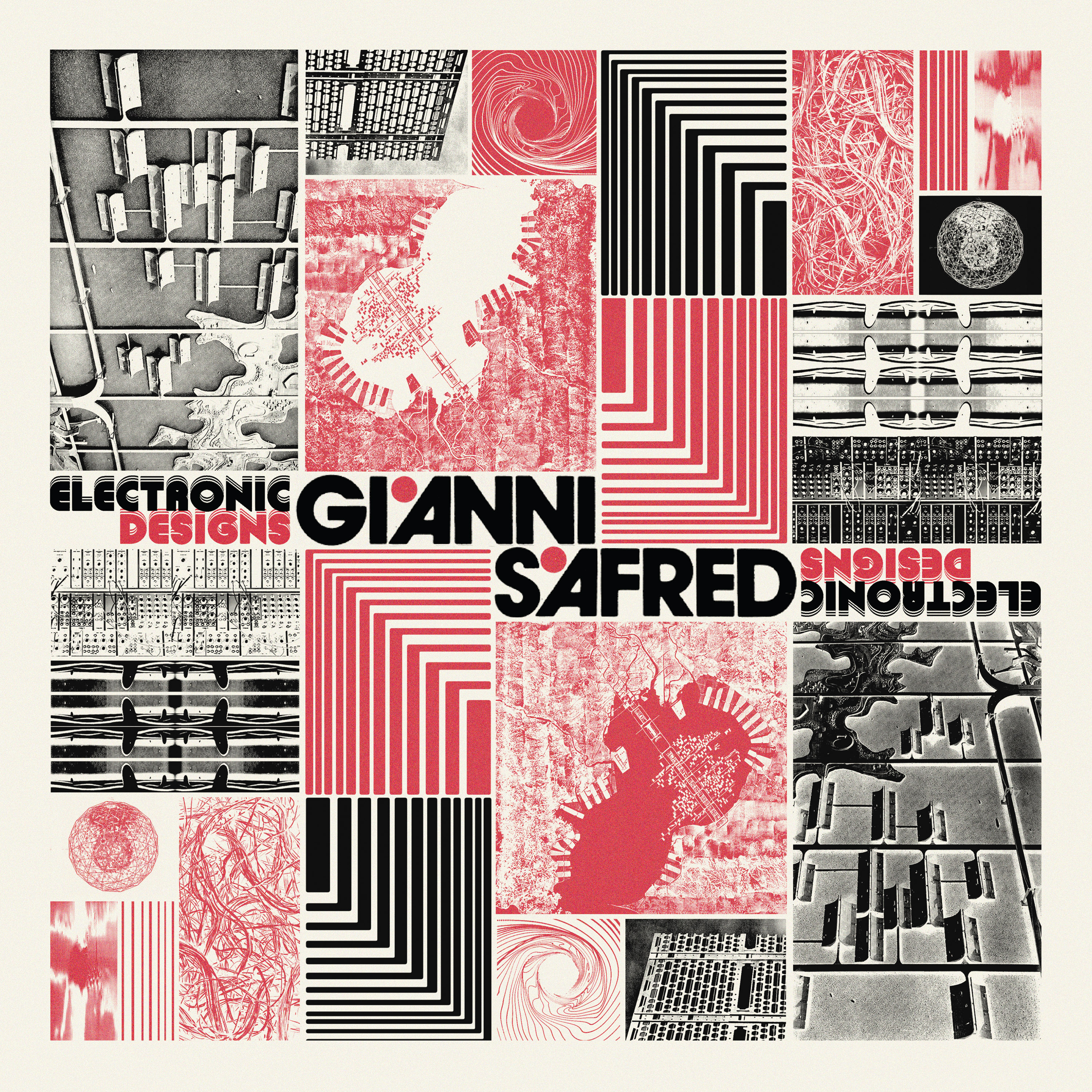 Electronic Designs was originally released in 1977 and it retains a weird and wonderful retro-futuristic atmosphere. By turns bizarre and swinging, wild and smooth, these recordings have a depth and an edge not always achieved in so-called library music. Younger glitch merchants can only hope to get close to the swing that Italian master Gianni Safred effortlessly knocks off on "Elastic Points." Then again, he did play with Django Reinhardt. This is a killer release with calculated, almost architectural, quality oozing out of every track. The cosmic melancholy of "Spheres'' is not unlike some of Basil Kirchin's more poignant compositions, such as "I Start Counting" while the frankly stunning "Planetarium" has Safred gradually unleashing an array of textural flourishes, as if imitating meteors or shooting stars amid a galaxy of stars and planets.
Electronic Designs was originally released in 1977 and it retains a weird and wonderful retro-futuristic atmosphere. By turns bizarre and swinging, wild and smooth, these recordings have a depth and an edge not always achieved in so-called library music. Younger glitch merchants can only hope to get close to the swing that Italian master Gianni Safred effortlessly knocks off on "Elastic Points." Then again, he did play with Django Reinhardt. This is a killer release with calculated, almost architectural, quality oozing out of every track. The cosmic melancholy of "Spheres'' is not unlike some of Basil Kirchin's more poignant compositions, such as "I Start Counting" while the frankly stunning "Planetarium" has Safred gradually unleashing an array of textural flourishes, as if imitating meteors or shooting stars amid a galaxy of stars and planets. While I am a fan of both DJ Python (Brian Piñeyro) and Ana Roxanne, a collaboration between the two is not something that I would have ever foreseen happening due to the substantial gulf between their styles. Unusual circumstances can lead to unexpected places, however, and the two mutual admirers found themselves both adrift and living in NYC in 2020 ("well-loved albums aside, no one was playing shows, and a general listlessness and disconnection prevailed"). As a result, the two finally met in person and soon began working on new music together ("studio experimentation was the instinctive extension of a friendship finding its feet"). Before they could finish an album, however, circumstances changed again and Piñeyro returned to the European club scene, while Roxanne toured the world and moved back to California.
While I am a fan of both DJ Python (Brian Piñeyro) and Ana Roxanne, a collaboration between the two is not something that I would have ever foreseen happening due to the substantial gulf between their styles. Unusual circumstances can lead to unexpected places, however, and the two mutual admirers found themselves both adrift and living in NYC in 2020 ("well-loved albums aside, no one was playing shows, and a general listlessness and disconnection prevailed"). As a result, the two finally met in person and soon began working on new music together ("studio experimentation was the instinctive extension of a friendship finding its feet"). Before they could finish an album, however, circumstances changed again and Piñeyro returned to the European club scene, while Roxanne toured the world and moved back to California.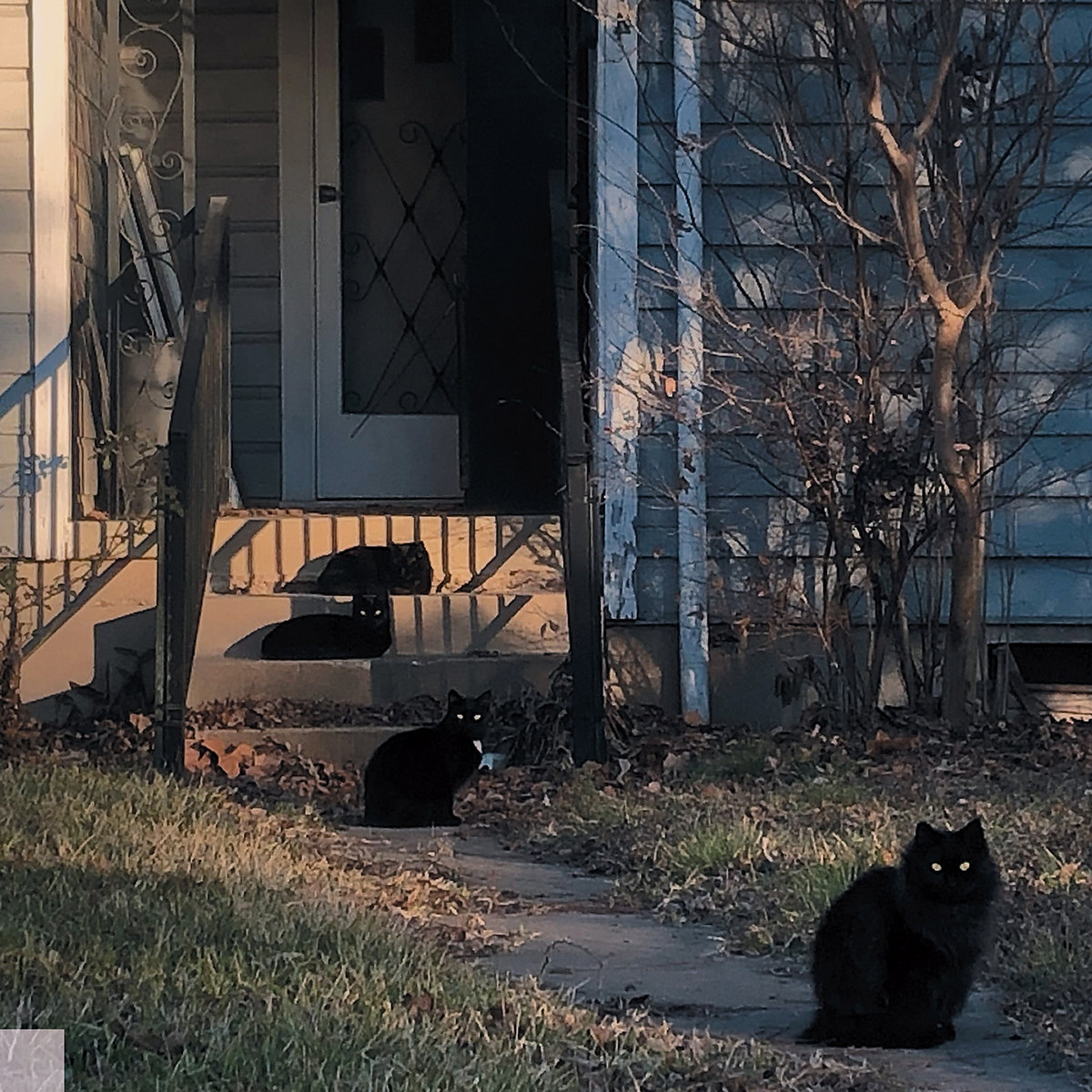 One of the reasons I had to investigate this latest album from the always prolific Masami Akita is that I was surprised it took him this long to make a cat themed album. A staunch animal rights activists and composer of many animal themed albums (Chickens! Bears! Dolphins! A whole bunch of other birds!), it took well over 40 years into his career to produce something in respect of the venerable house feline. How much this applies beyond the title and beautiful photography used as packaging is of course questionable, but musically it is Akita at his most diverse.
One of the reasons I had to investigate this latest album from the always prolific Masami Akita is that I was surprised it took him this long to make a cat themed album. A staunch animal rights activists and composer of many animal themed albums (Chickens! Bears! Dolphins! A whole bunch of other birds!), it took well over 40 years into his career to produce something in respect of the venerable house feline. How much this applies beyond the title and beautiful photography used as packaging is of course questionable, but musically it is Akita at his most diverse. This latest collection from Folklore Tapes borrows its title from a Japanese proverb about knowing one's limitations ("the frog in the well knows nothing of the sea"), which was itself borrowed from a Chinese fable. In the context of an album devoted to UFO lore, of course, humans are the frogs, the infinite universe is the ocean, and the usual eclectic Folklore Tapes cast of characters gleefully devote themselves to celebrating the colorful hoaxes and stories of their countrymen who claim to have experienced a visit from extraterrestrial life. While alien visitations are admittedly a bit outside the usual realm of Folklore Tapes' research, I would be hard pressed to think of a roster of artists better suited to tackle the topic, as just about everyone involved brings a freewheeling playfulness to the theme and surprises abound. This is yet another characteristically brilliant and inspired compilation from the inimitable Folklore Tapes. Hell, it might even be their best yet.
This latest collection from Folklore Tapes borrows its title from a Japanese proverb about knowing one's limitations ("the frog in the well knows nothing of the sea"), which was itself borrowed from a Chinese fable. In the context of an album devoted to UFO lore, of course, humans are the frogs, the infinite universe is the ocean, and the usual eclectic Folklore Tapes cast of characters gleefully devote themselves to celebrating the colorful hoaxes and stories of their countrymen who claim to have experienced a visit from extraterrestrial life. While alien visitations are admittedly a bit outside the usual realm of Folklore Tapes' research, I would be hard pressed to think of a roster of artists better suited to tackle the topic, as just about everyone involved brings a freewheeling playfulness to the theme and surprises abound. This is yet another characteristically brilliant and inspired compilation from the inimitable Folklore Tapes. Hell, it might even be their best yet. Like 2021's Four Lies in the Eavesdrop Business, composer/multi-instrumentalist Matt Weston's latest work is a lengthy double record. However, this time he specifically utilizes the format to create four side-long and expansive pieces that constantly develop, bringing in a multitude of different sounds and elements. The result is a series of intense, dense compositions that can be hard to keep up with at first, but eventually reveal a deep sense of complexity in their structures.
Like 2021's Four Lies in the Eavesdrop Business, composer/multi-instrumentalist Matt Weston's latest work is a lengthy double record. However, this time he specifically utilizes the format to create four side-long and expansive pieces that constantly develop, bringing in a multitude of different sounds and elements. The result is a series of intense, dense compositions that can be hard to keep up with at first, but eventually reveal a deep sense of complexity in their structures. As Alter's album description insightfully observes, a collaboration between these two Editions Mego alumnae "somehow seemed inevitable," yet I was still pleasantly surprised at how seamlessly Lewis and Void were able to combine their visions into something that feels both new and wonderful. On one level, the success of this union makes perfect sense, as both artists tend to turn out some of their strongest work in collaborative situations (Carter Tutti Void and Lewis's KLMNOPQ EP with Peder Mannerfelt being prime examples of that phenomenon). However, both artists excel in extremely specific realms that have some limitations: Lewis is exceptionally good at collaging non-musical sounds, while Void seems particularly adept at crafting eccentric noise-damaged techno.
As Alter's album description insightfully observes, a collaboration between these two Editions Mego alumnae "somehow seemed inevitable," yet I was still pleasantly surprised at how seamlessly Lewis and Void were able to combine their visions into something that feels both new and wonderful. On one level, the success of this union makes perfect sense, as both artists tend to turn out some of their strongest work in collaborative situations (Carter Tutti Void and Lewis's KLMNOPQ EP with Peder Mannerfelt being prime examples of that phenomenon). However, both artists excel in extremely specific realms that have some limitations: Lewis is exceptionally good at collaging non-musical sounds, while Void seems particularly adept at crafting eccentric noise-damaged techno.  This latest album from Barbieri is intended as a sister album to 2019's landmark Ecstatic Computation and has been released to correspond with the imminent reissue of the latter. The central difference between the two albums is that Myuthafoo gradually and organically took shape during Barbieri's extensive touring, as the "nomadic, interactive energy" of those many live dates inspired her to play with experimental variations in her process each night. More specifically, she would program patterns into her sequencer, then feed them into her "arsenal of noise generators" to explore different combinations and the most compelling results were set aside for future expansion and/or eventual release.
This latest album from Barbieri is intended as a sister album to 2019's landmark Ecstatic Computation and has been released to correspond with the imminent reissue of the latter. The central difference between the two albums is that Myuthafoo gradually and organically took shape during Barbieri's extensive touring, as the "nomadic, interactive energy" of those many live dates inspired her to play with experimental variations in her process each night. More specifically, she would program patterns into her sequencer, then feed them into her "arsenal of noise generators" to explore different combinations and the most compelling results were set aside for future expansion and/or eventual release.  Matthew Cooper's newest Eluvium album is apparently inspired by two works of poetic literature by T.S.Eliot and Richard Brautigan. That's easier said than done, of course, and equally unclear is how Cooper has changed his compositional methodology because of a debilitating medical problem with his left shoulder and arm. It is hard to decipher exactly what is meant by, to paraphrase, blending electronic automations with traditional songwriting and using algorithms to extract from several years of notebook scribble. Perhaps this means he has worked in cyborgian harmony with machines, which would fit with the Brautigan reference point of All Watched Over By Machines Of Loving Grace.
Matthew Cooper's newest Eluvium album is apparently inspired by two works of poetic literature by T.S.Eliot and Richard Brautigan. That's easier said than done, of course, and equally unclear is how Cooper has changed his compositional methodology because of a debilitating medical problem with his left shoulder and arm. It is hard to decipher exactly what is meant by, to paraphrase, blending electronic automations with traditional songwriting and using algorithms to extract from several years of notebook scribble. Perhaps this means he has worked in cyborgian harmony with machines, which would fit with the Brautigan reference point of All Watched Over By Machines Of Loving Grace. Emahoy Tsege Mariam Gebru passed on early this year, but not before this album was released to celebrate her 99th birthday. It collects pieces originally issued in 1972 as Song of Jerusalem, including the stunning title track and "Quand La Mer Furieuse" in which Gebru sings; a moment which probably should not draw parallels with "Garbo Talks!" (when the speaking voice of that star of silent films first shocked audiences to sleep) but is as startlingly beautiful as you might expect if you have heard her play her compositions for piano at all. These she does in a manner impossible to hear without feeling as if the sun has come out from behind a cloud and is gently warming the side of your face. Reach for adjectives and terms such as liturgical, classical, homemade, and heavenly, but the key word is definitely "transcendent."
Emahoy Tsege Mariam Gebru passed on early this year, but not before this album was released to celebrate her 99th birthday. It collects pieces originally issued in 1972 as Song of Jerusalem, including the stunning title track and "Quand La Mer Furieuse" in which Gebru sings; a moment which probably should not draw parallels with "Garbo Talks!" (when the speaking voice of that star of silent films first shocked audiences to sleep) but is as startlingly beautiful as you might expect if you have heard her play her compositions for piano at all. These she does in a manner impossible to hear without feeling as if the sun has come out from behind a cloud and is gently warming the side of your face. Reach for adjectives and terms such as liturgical, classical, homemade, and heavenly, but the key word is definitely "transcendent." This latest LP from Big Blood is their first for Ba Da Bing and a spiritual successor of sorts to Do You Want to Have a Skeleton Dream?, as the band are back in "full family trio retro-pop extravaganza" mode. For the most part, Quinnissa (who was apparently only 13 when this album was recorded) handles the lead vocals for a series of hooky, bass-driven garage rock nuggets, though there are also a couple of headier Colleen-sung gems for fans of the band's darker, more psychedelic side. Notably, Caleb's frayed yelp is entirely absent from the proceedings, but it probably would have felt out of place among the unabashed throwback pop fare. Moreover, First Aid Kit feels like a full-on Quinnissa showcase, which makes for a rather unique entry in the Big Blood canon, as she is one hell of a belter and also spontaneously improvised all her lyrics during recordings. As Caleb notes in the album description, being in a band with your teenage daughter is admittedly something of a messy and volatile situation ("lots of practices end with her being tossed from the band"), but I can see why they are sticking with this format, as Quinnissa increasingly feels like a pop supernova in its formative stages.
This latest LP from Big Blood is their first for Ba Da Bing and a spiritual successor of sorts to Do You Want to Have a Skeleton Dream?, as the band are back in "full family trio retro-pop extravaganza" mode. For the most part, Quinnissa (who was apparently only 13 when this album was recorded) handles the lead vocals for a series of hooky, bass-driven garage rock nuggets, though there are also a couple of headier Colleen-sung gems for fans of the band's darker, more psychedelic side. Notably, Caleb's frayed yelp is entirely absent from the proceedings, but it probably would have felt out of place among the unabashed throwback pop fare. Moreover, First Aid Kit feels like a full-on Quinnissa showcase, which makes for a rather unique entry in the Big Blood canon, as she is one hell of a belter and also spontaneously improvised all her lyrics during recordings. As Caleb notes in the album description, being in a band with your teenage daughter is admittedly something of a messy and volatile situation ("lots of practices end with her being tossed from the band"), but I can see why they are sticking with this format, as Quinnissa increasingly feels like a pop supernova in its formative stages. This latest LP from Wolf Eyes is something of a major release for the duo, as they are currently celebrating their 25th year with "their first widely-distributed non-compilation album in six years." Fittingly, Dreams In Splattered Lines is one of the project's most compelling and sophisticated albums to date, which is likely the result of some recent developments that would have seemed absolutely unimaginable when the project first began (collaborating with a Pulitzer Prize winner, a viral video for a fashion company, sharing stages with jazz titans, a residency at The New York Public Library, etc.). The library residency in particular played an especially large role in shaping this album, as the duo built a number of new instruments while they were there and also spent a lot of time absorbing the Surrealism Beyond Borders exhibit at the Metropolitan Museum of Art. Of course, the truly interesting bit is how inventively Nate Young and John Olson assimilated all their new ideas, as well as the fact that their more high art/avant-garde influences amusingly collide with a newfound fascination with how "hit songs" work. While Wolf Eyes have sporadically dazzled me over the years as a cool noise band, Dreams In Splattered Lines feels like the album where they have arguably become the spiritual heirs to Throbbing Gristle in channeling the best ideas of the 20th century avant-garde into a zeitgeist-capturing mirror of the times (a post-hope world of crumbling institutions and widespread alienation).
This latest LP from Wolf Eyes is something of a major release for the duo, as they are currently celebrating their 25th year with "their first widely-distributed non-compilation album in six years." Fittingly, Dreams In Splattered Lines is one of the project's most compelling and sophisticated albums to date, which is likely the result of some recent developments that would have seemed absolutely unimaginable when the project first began (collaborating with a Pulitzer Prize winner, a viral video for a fashion company, sharing stages with jazz titans, a residency at The New York Public Library, etc.). The library residency in particular played an especially large role in shaping this album, as the duo built a number of new instruments while they were there and also spent a lot of time absorbing the Surrealism Beyond Borders exhibit at the Metropolitan Museum of Art. Of course, the truly interesting bit is how inventively Nate Young and John Olson assimilated all their new ideas, as well as the fact that their more high art/avant-garde influences amusingly collide with a newfound fascination with how "hit songs" work. While Wolf Eyes have sporadically dazzled me over the years as a cool noise band, Dreams In Splattered Lines feels like the album where they have arguably become the spiritual heirs to Throbbing Gristle in channeling the best ideas of the 20th century avant-garde into a zeitgeist-capturing mirror of the times (a post-hope world of crumbling institutions and widespread alienation).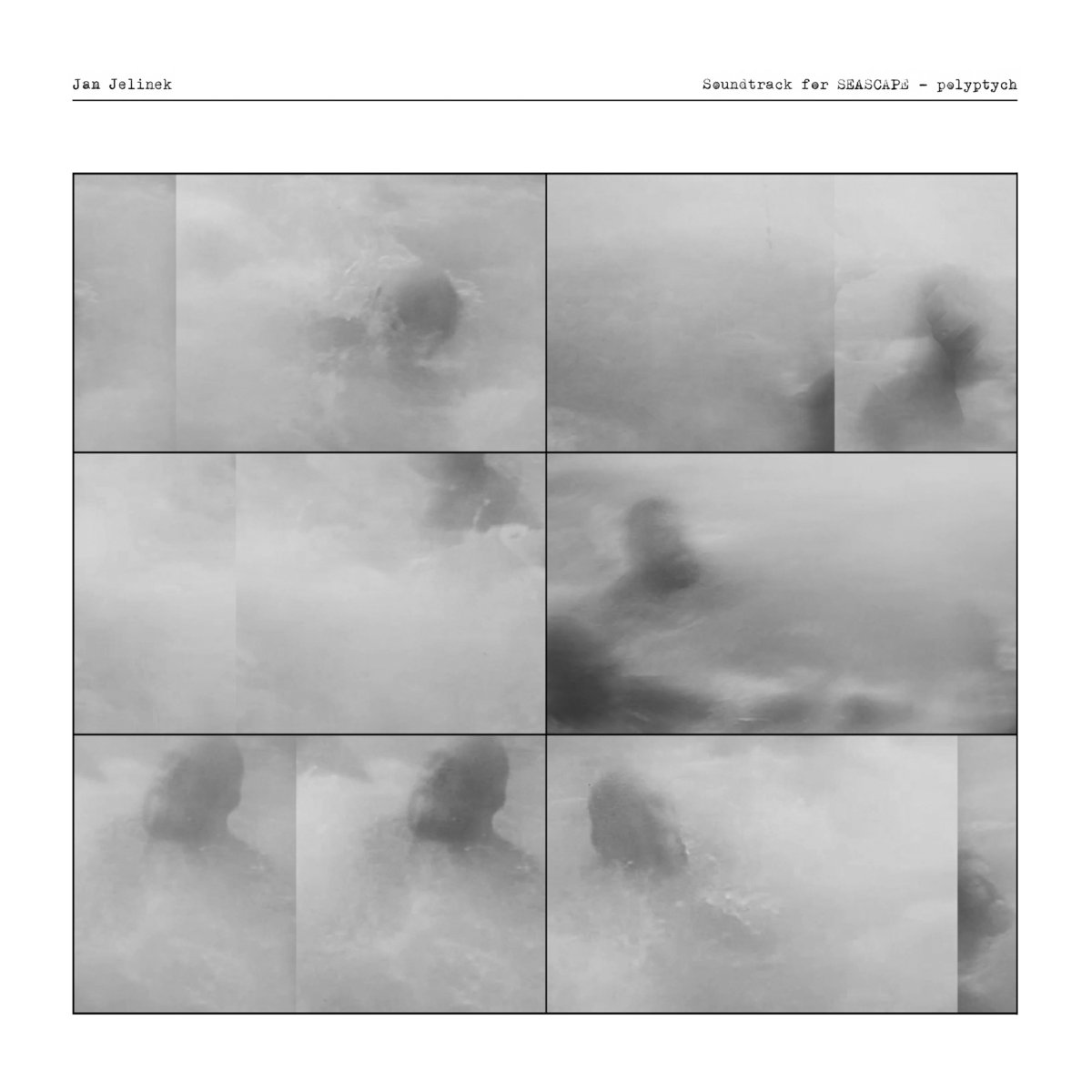 Back in 2017 Jan Jelinek created a 43 minute radio play called Zwischen featuring Alice Schwarzer, John Cage, Hubert Fichte, Marshall McLuhan, Susan Sontag, Rainer Werner Fassbinder, Joseph Beuys, Friedericke Mayröcker, Joschka Fischer, Jonathan Meese, Jean Baudrillard, Lady Gaga, Slavoj Zizek, Richard Buckminster Fuller, Marcel Duchamp, Karlheinz Stockhausen, Miranda July, Yoko Ono, Ernst Jandl, Arno Schmidt, Herbert Wehner and Max Ernst.
Back in 2017 Jan Jelinek created a 43 minute radio play called Zwischen featuring Alice Schwarzer, John Cage, Hubert Fichte, Marshall McLuhan, Susan Sontag, Rainer Werner Fassbinder, Joseph Beuys, Friedericke Mayröcker, Joschka Fischer, Jonathan Meese, Jean Baudrillard, Lady Gaga, Slavoj Zizek, Richard Buckminster Fuller, Marcel Duchamp, Karlheinz Stockhausen, Miranda July, Yoko Ono, Ernst Jandl, Arno Schmidt, Herbert Wehner and Max Ernst. Dorothy Moskovitz was the singer in The United States of America, a short-lived group which made one legendary self-titled album. That was in December 1967 and she later became a member of Country Joe McDonald's band, sang live jazz, composed for children, commercials, theater, and became an elementary school music teacher. Her return on Under an Endless Sky, recorded with Italian electronic composer Francesco Paolo Paladino and writer Luca Ferrari is astonishing, and never more so at the moment around two and a half minutes into the opening title track when we hear Dorothy Moskovitz sing for the first time in a very long time*. If her voice once sounded cooler and more urbane than Catherine Ribeiro's, more innocent and intelligent than Grace Slick's, in 2023 it has a crumbling beauty and defiant timbre usually associated with Robert Wyatt or Nico (who apparently once tried to join TUSoA). Comparisons are entertaining but also odious; Moskovitz is a strange, distinctive treasure, perhaps unique.
Dorothy Moskovitz was the singer in The United States of America, a short-lived group which made one legendary self-titled album. That was in December 1967 and she later became a member of Country Joe McDonald's band, sang live jazz, composed for children, commercials, theater, and became an elementary school music teacher. Her return on Under an Endless Sky, recorded with Italian electronic composer Francesco Paolo Paladino and writer Luca Ferrari is astonishing, and never more so at the moment around two and a half minutes into the opening title track when we hear Dorothy Moskovitz sing for the first time in a very long time*. If her voice once sounded cooler and more urbane than Catherine Ribeiro's, more innocent and intelligent than Grace Slick's, in 2023 it has a crumbling beauty and defiant timbre usually associated with Robert Wyatt or Nico (who apparently once tried to join TUSoA). Comparisons are entertaining but also odious; Moskovitz is a strange, distinctive treasure, perhaps unique. Releasing two full length albums mere months from each other, Colin Andrew Sheffield has been especially active in 2023. Considering his previous Repair Me Now dates back to 2018, it is a veritable flurry of activity. However, this is not a case where Don't Ever Let Me Know and Images seem like a double album split into two separate works, but both are thematically and structurally different from one another, even if both clearly showcase his approach of mangling samples and recordings into entirely different creations.
Releasing two full length albums mere months from each other, Colin Andrew Sheffield has been especially active in 2023. Considering his previous Repair Me Now dates back to 2018, it is a veritable flurry of activity. However, this is not a case where Don't Ever Let Me Know and Images seem like a double album split into two separate works, but both are thematically and structurally different from one another, even if both clearly showcase his approach of mangling samples and recordings into entirely different creations.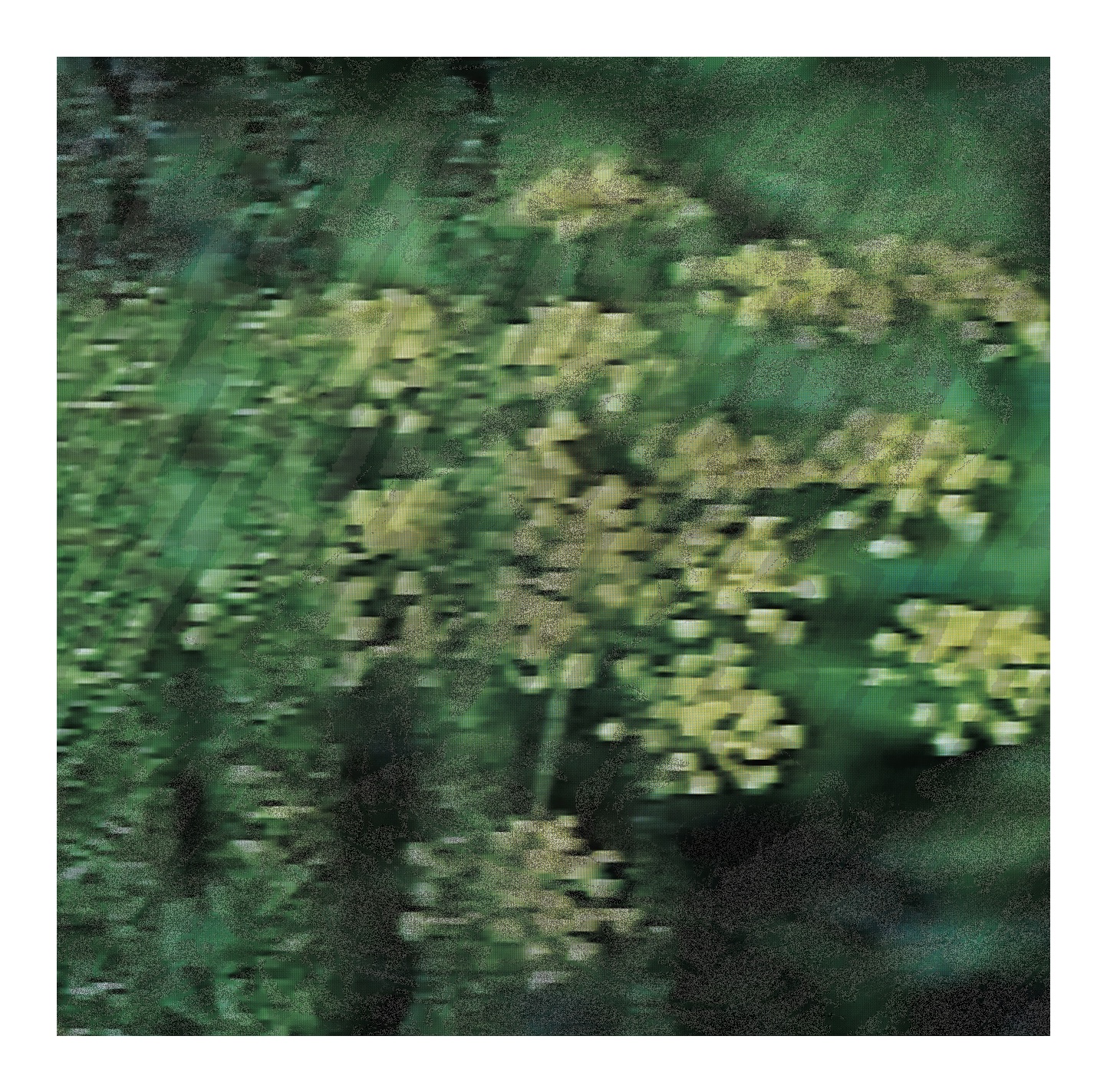 The latest cassette from the enigmatic duo Zizia (astrologer Amber Wolfe and natural scientist Jarrod Fowler) is intentionally ambiguous just from its presentation. No information presented within the tape itself, its neon green case covers a blurry photo of the Zizia flower and an intricately printed abstract image on the cassette shell, without a single bit of text included on either. A quick search online finds a website that offers details, listings of insects, plants, and artists that serve only to confound more than clarify. The self-identified concept of anti-musicology is apparent, however, and results in a complex and diverse suite of two lengthy noise works.
The latest cassette from the enigmatic duo Zizia (astrologer Amber Wolfe and natural scientist Jarrod Fowler) is intentionally ambiguous just from its presentation. No information presented within the tape itself, its neon green case covers a blurry photo of the Zizia flower and an intricately printed abstract image on the cassette shell, without a single bit of text included on either. A quick search online finds a website that offers details, listings of insects, plants, and artists that serve only to confound more than clarify. The self-identified concept of anti-musicology is apparent, however, and results in a complex and diverse suite of two lengthy noise works. These two albums from Seah, also known as multimedia artist and philosopher Chelsea Heikes, seemingly draw from different elemental categories, which ends up setting the foundation for the sounds contained within. The first, Conduits of the Hydrosphere, clearly draws from water while Clouds and Spectres is appropriately expansive, vapor-like, and ghostly at times. Released separately, they feel like complementary works that act as variations on sonic exploration.
These two albums from Seah, also known as multimedia artist and philosopher Chelsea Heikes, seemingly draw from different elemental categories, which ends up setting the foundation for the sounds contained within. The first, Conduits of the Hydrosphere, clearly draws from water while Clouds and Spectres is appropriately expansive, vapor-like, and ghostly at times. Released separately, they feel like complementary works that act as variations on sonic exploration.
